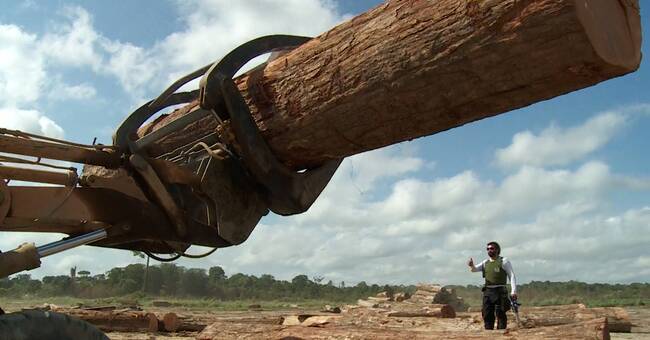Land changes such as deforestation to make way for agriculture, for example, are behind between 6 and 17 percent of global carbon dioxide emissions.
Preserving the forest is thus an important piece of the puzzle in the fight against climate change.
Can act quickly in case of change
In a new study published in Nature Climate Change, researchers studied deforestation in 22 low- and middle-income countries between 2011 and 2018. They used high-resolution images from satellites to monitor large areas covered by forest.
Every eight days, new pictures of the forest were taken.
When there was a change in the pictures as a result of the forest being felled, a warning was sent out via email to those who subscribe to the service.
The system that the researchers have developed makes it possible to see changes quickly.
- The advantage is that you can act very quickly to prevent felling, says Deliang Chen, professor of physical meteorology at the University of Gothenburg who has read the study.
"Alerts come every week"
The technology has long been used to analyze land use changes.
But what has been problematic is that there has been poor resolution and that the information has only been read after a year or so - not so often that decision-makers have the opportunity to act in real time.
"This is the first system that is global, has a high resolution and comes with warnings every week," says Jennifer Alix-Garcia, a professor at Oregon State University and one of the researchers behind the study.
Researchers were able to see that deforestation in Africa decreased by 18 percent over two years as a result of the warning system.
However, deforestation in Asia and South America did not decrease as much.
Researchers do not know for sure what the difference is, but they speculate that it may have something to do with the fact that South America and Asia already had surveillance systems - although not as developed.
Political uncertainty sticks in the wheel
Another reason is that there is political turbulence in two countries with large forest areas in South America - Colombia and Venezuela where the will to act has been low.
- This study will be of great importance for countries that do not have the capacity to monitor, either due to resource constraints or political will.
You can not blame yourself for not knowing what is happening.
I believe that the countries that do nothing against deforestation will have to act with this technology, says Deliang Chen.
Every year, 495 square kilometers of forest could be saved in Africa thanks to satellite monitoring.
This corresponds to 70,000 football pitches.
This means that a lot of carbon dioxide could be saved, but also plant and animal life.
- The forest offers so much more.
Not just for humans, but for biodiversity, says Deliang Chen.

